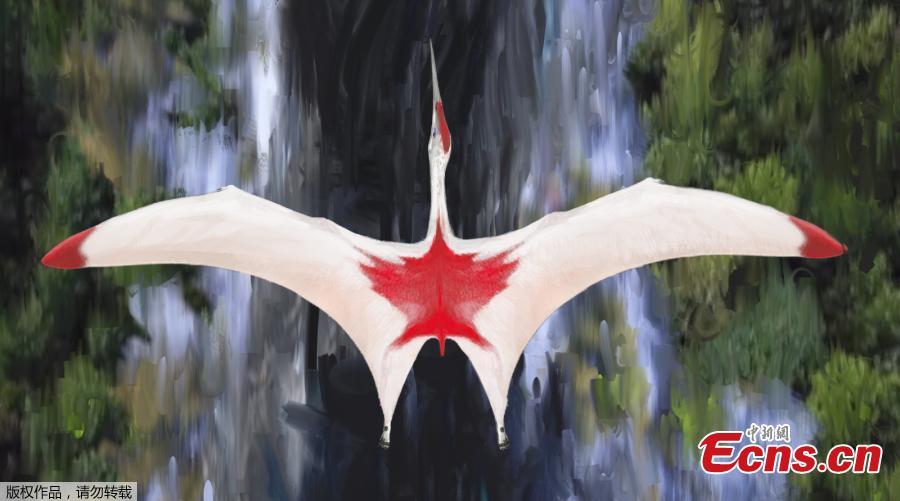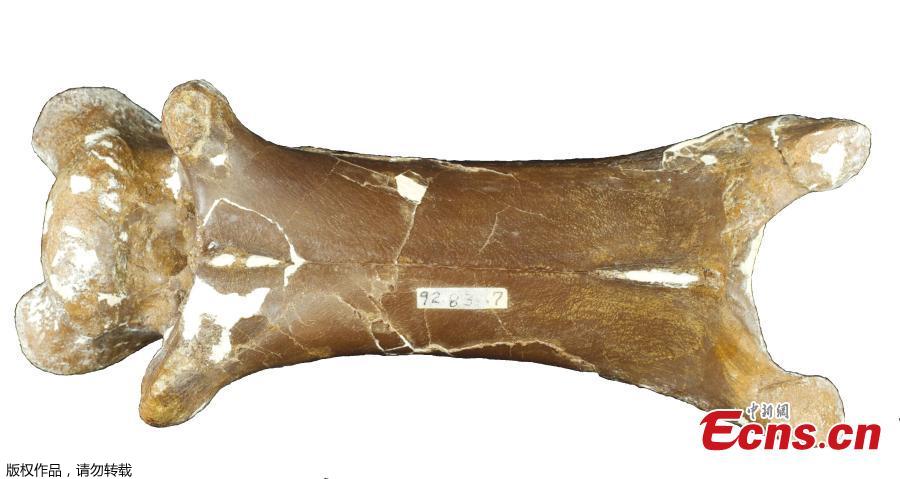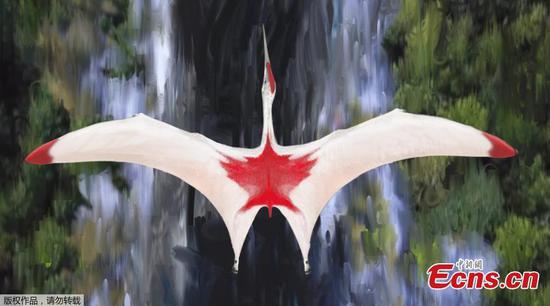
An undated handout image released by the Queen Mary University of London on September 10, 2019, shows an artist's impression of a Cryodrakon boreas, a newly discovered species of pterosaur. Scientists on September 10, 2019, unveiled a new species of pterosaur, the plane-sized reptiles that lorded over primeval skies above T-rex, Triceratops and other dinosaurs of the late Cretaceous. With a wingspan of ten metres and weighing 250 kilos, Cryodrakon boreas rivals another pterosaur as the largest flying animal of all time, researchers reported in the Journal of Vertebrate Paleontology. (Photo/Agencies)

An undated handout image released by the Queen Mary University of London on September 10, 2019, shows an artist's impression of a Cryodrakon boreas, a newly discovered species of pterosaur. Scientists on September 10, 2019, unveiled a new species of pterosaur, the plane-sized reptiles that lorded over primeval skies above T-rex, Triceratops and other dinosaurs of the late Cretaceous. With a wingspan of ten metres and weighing 250 kilos, Cryodrakon boreas rivals another pterosaur as the largest flying animal of all time, researchers reported in the Journal of Vertebrate Paleontology. (Photo/Agencies)

An undated handout picture released by the Queen Mary University of London on September 10, 2019, shows a fossil of a neck bone of a full-grown Cryodrakon boreas, a newly discovered species of pterosaur. Scientists on September 10, 2019, unveiled a new species of pterosaur, the plane-sized reptiles that lorded over primeval skies above T-rex, Triceratops and other dinosaurs of the late Cretaceous. With a wingspan of ten metres and weighing 250 kilos, Cryodrakon boreas rivals another pterosaur as the largest flying animal of all time, researchers reported in the Journal of Vertebrate Paleontology. (Photo/Agencies)























